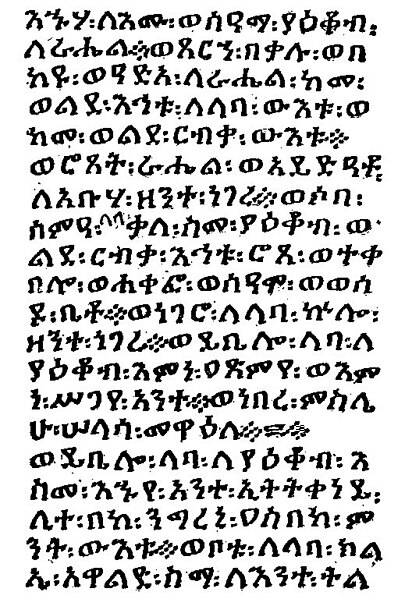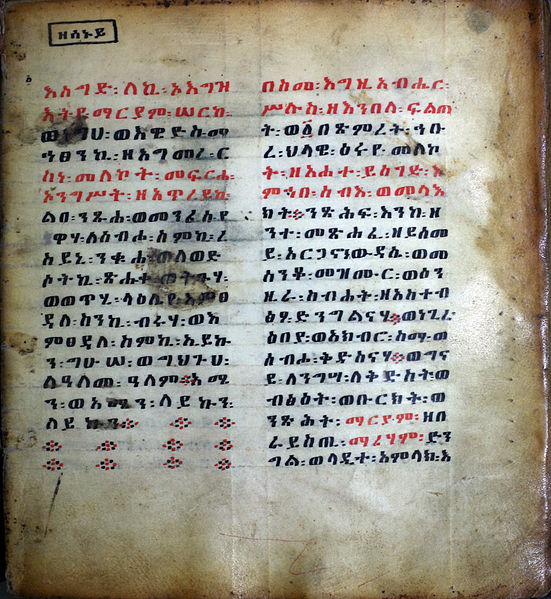Geʽez is a script used as an abugida (alphasyllabary) for several Afro-Asiatic and Nilo-Saharan languages of Ethiopia and Eritrea. It originated as an abjad and was first used to write the Geʽez language, now the liturgical language of the Ethiopian Orthodox Tewahedo Church, the Eritrean Orthodox Tewahedo Church, the Eritrean Catholic Church, the Ethiopian Catholic Church, and Haymanot Judaism of the Beta Israel Jewish community in Ethiopia. In the languages Amharic and Tigrinya, the script is often called fidäl (ፊደል), meaning "script" or "letter". Under the Unicode Standard and ISO 15924, it is defined as Ethiopic text.
A painting of St. Sisinnios on horseback spearing the demon Wǝrzalyā on a Geʻez prayer scroll meant to dispel evil spirits that were thought to cause various ailments, Wellcome Collection, London
Sign in Amharic using the Geʻez script at the Ethiopian millennium celebration
Genesis 29.11–16 in Geʽez
Coin of Emperor Menelik II. On the reverse is the date ፲፰፻፹፱ (1889). Punctuation marks in the text of the legend: ፡ and ።
Geʽez is an ancient South Semitic language. The language originates from what is now northern Ethiopia and Eritrea.
Ezana stone, written in Ge'ez explaining his conquests and accomplishments
Genesis 29.11–16 in Geʽez
Example of Geʽez taken from a 15th-century Ethiopian Coptic prayer book
The Ezana Stone, engraved from AD 330 to 356, is written in ancient Ge'ez, Sabaean and Greek.







